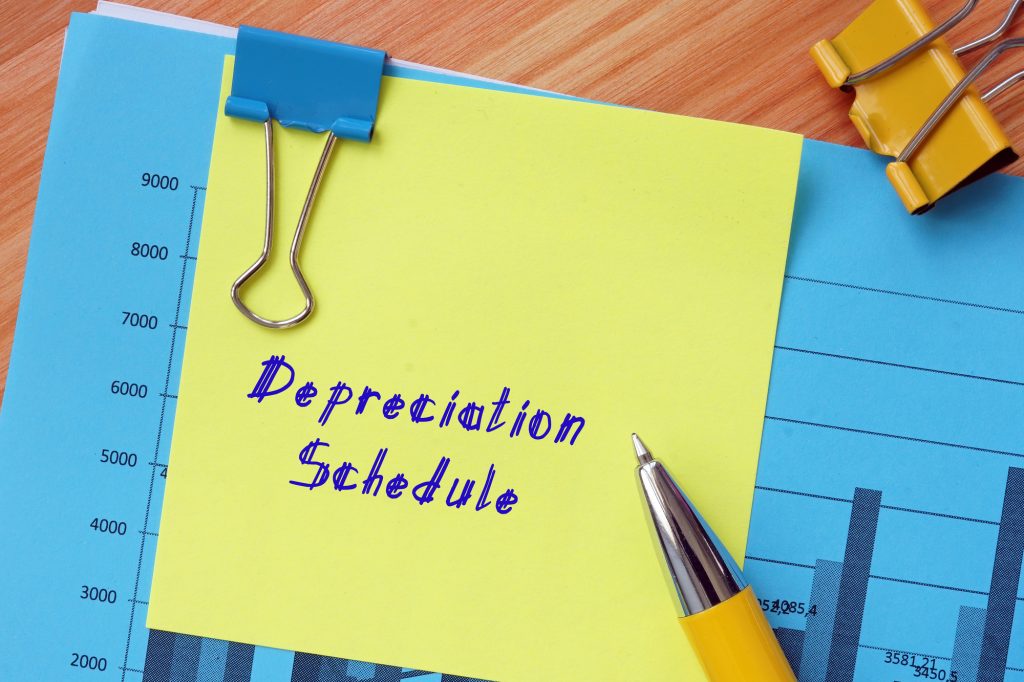In the federal tax system, you are required to keep copies of your depreciation schedules for three years. There is a three-year law that many people believe will protect them as long as they keep their documents for the period.
How to keep your tax records
It’s crucial to maintain an electronic backup of your records to avoid inconveniences in the event of loss. Keep a backup set of records that includes the investment property depreciation schedules for ease retrieval. Records can be scanned and converted from paper to digital format even if provided only in paper form. After converting them to electronic format, taxpayers can download their electronic documents to a backup storage device, such as an external hard drive. Additionally, you might want to consider using online backup, the only reliable way of safeguarding data.
To keep good accounting records, you should track the amount of depreciation you apply to each business asset. After all, the total value of your assets and the amount of accumulated depreciation are the only numbers included in your financial statements.

Creating Depreciation Schedules for Your Company
Preparing a depreciation report for each asset account that you depreciate is the most straightforward approach to keep track of depreciation. For example, create depreciation schedules for buildings, furniture and fixtures, office equipment, and other assets.
The initial purchase date, original cost basis, and recovery time should all be included in your depreciation schedule to compute yearly depreciation. You may add columns to monitor real depreciation costs and compute each asset’s current value.
What is the best time to get a tax depreciation schedule?
To maximise results, tax depreciation schedules should be obtained as soon as feasible after the conclusion of the fiscal year (June 30th). To put it another way, if you have your depreciation schedule in order before this date, you’ll be able to claim all you’re qualified for from the previous fiscal year, maximising your tax deductions.
It’s crucial to remember that a tax depreciation plan has a one-time fee. This is in place for forty years, or the life of the property; therefore, it’s vital for property investors to make genuine claims to avoid missing out on tax-deductions.
Even if you just acquired an investment property lately, you should get a depreciation schedule before the end of the current fiscal year rather than waiting until the next. You may simply claim partial deductions, which will be adjusted for the length of time you’ve held the property.
If you’re new to property investing and you’ve missed a deduction, the ATO will let you amend your tax return to recoup lost claims from up to two financial years ago. Of course, staying on top of your money is always a good idea to minimise unnecessary losses and worry.
What is the procedure for claiming depreciation allowance?
To lodge a depreciation claim, you’ll require a depreciation schedule, alongside other documents. Based on the schedule, the amount of depreciation you may claim significantly lowers the tax you’re likely to pay.
A quantity surveyor will separate the plant items (e.g., furniture) from the structural components (e.g., building blocks) in a depreciation schedule. Various components depreciate at varying rates, which are usually determined by the duration the item will endure.
For example, if a $500 oven has a 5-year life, you may deduct $100 from your taxable income during that time utilising the Prime Cost Method of depreciation.
What method will the quantity surveyor use to determine the property's depreciation?
All depreciable assets will be documented and photographed by a skilled quantity surveyor. This ensures that you benefit from all tax breaks. In the case of auditing, the paperwork may be utilised as proof. A quantity surveyor will work with the renter or property management to ensure that the tenant is not inconvenienced.
Before the renter moves in, the optimum time to have a quantity surveyor evaluate your property is just after settlement.
What does my property depreciation schedule cost?
The price of preparing the schedule varies depending on the sort of property you bought, its size, location, and a variety of other considerations.
In general, most quantity surveying firms provide a money-back guarantee, stating that you will save double your charge in the first year or the report will be free. The costs of quantity surveyors are likewise wholly tax-deductible.
How long will it take me to finish my schedule?
Assuming the quantity surveyor can visit your property without delay, your depreciation schedule will take between 14 and 21 days to finish. Contact us at 1300 313 524 for additional information on depreciation schedules.
